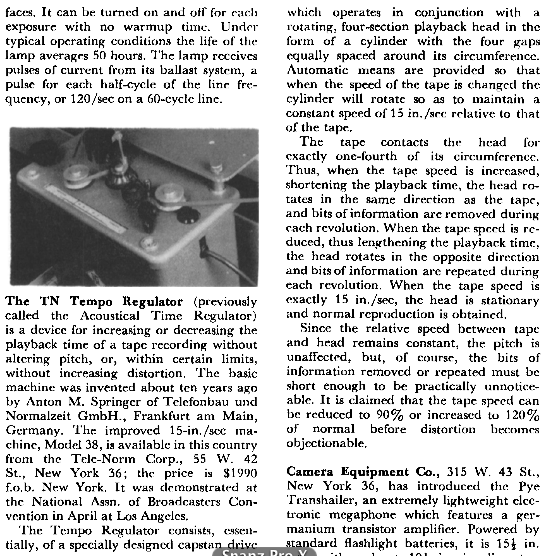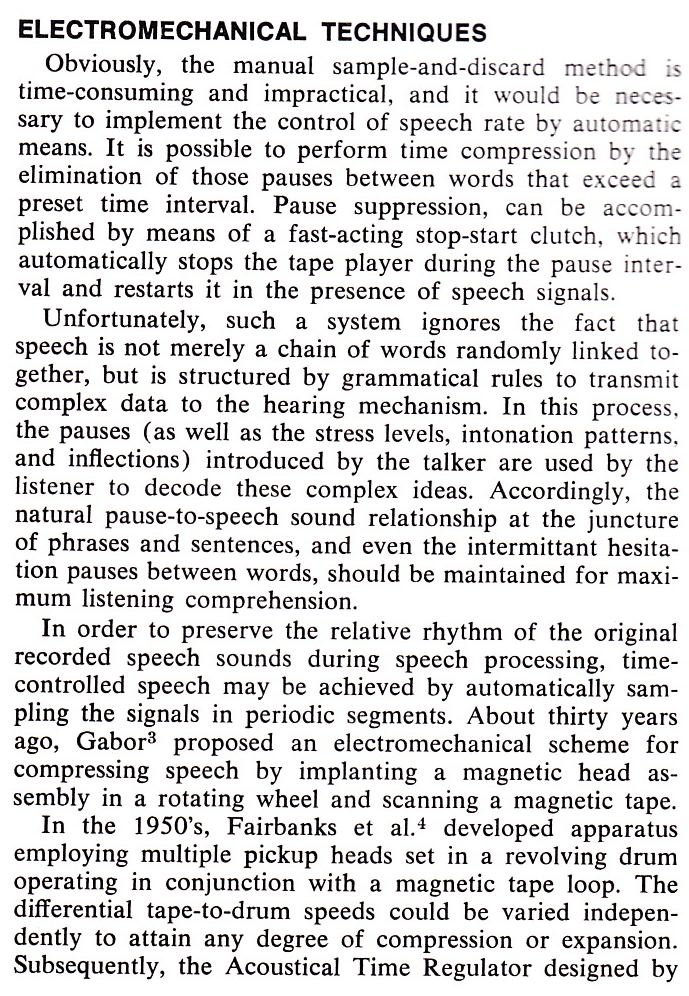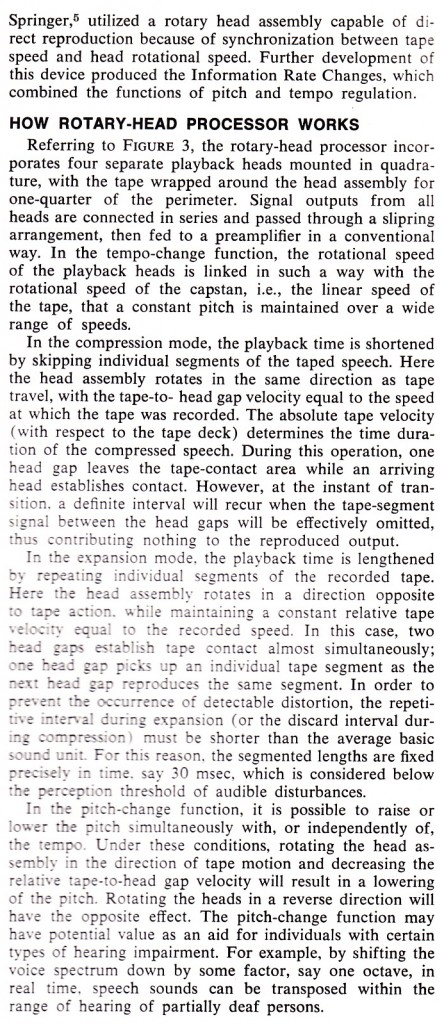 From DB Mag, sometime mid seventies: a really fascinating discussion of something that I would have guessed was impossible: completely electro-mechanical automated audio time compression/expansion. As-in: changing the run time of an audio recording without changing the pitch. The article was written by one Sidney Silver, who was the recording/audio director of the telecom division of the UN. I feel like this could make an amazing-sounding plug-in if someone took the time to digitally model it.
From DB Mag, sometime mid seventies: a really fascinating discussion of something that I would have guessed was impossible: completely electro-mechanical automated audio time compression/expansion. As-in: changing the run time of an audio recording without changing the pitch. The article was written by one Sidney Silver, who was the recording/audio director of the telecom division of the UN. I feel like this could make an amazing-sounding plug-in if someone took the time to digitally model it.
Here is a June 1958 press announcement for Springer’s device, compete with photograph. The price in 1955 was $1900 ($14,000 in 2013 dollars) (SOURCE)
 Do any of these ‘Acoustical Time Regulators’ survive? Anyone ever seen one, or heard this system in operation?
Do any of these ‘Acoustical Time Regulators’ survive? Anyone ever seen one, or heard this system in operation?
For more information regarding this technology, click here.


6 replies on “Mechanically-Achieved Audio Time Compression/Expansion”
there is an article on the Wendy Carlos site about something very similiar:
http://www.wendycarlos.com/other/Eltro-1967/Eltro-1967.pdf
awesome! thanks for sharing Tam. c.
I remember repairing an Eltro at Universal City studios in the early ’80’s. They were occasionally used on dubbing stages, and they did actually work pretty well (within a certain range), if they were set up correctly. The Audio Cyclopedia 2nd. edition has a good description of the theory behind the device.
In the late 60s or early 1970 I took a course at Ohio University called Listening. It used a mechanical T/P device like the one described here. Day 1 we listened to a lecture (recorded and boring) at real speed. Took a test about it afterward. Each day, a different lecture with the playback at increased speed. Each day, a test. Soon we were at 10 or maybe even 15 times or more the real speed. The time was reduced but normal pitch was retained. Nothing could really be understood by then on the surface, but … my test scores got better and better each day. They started in the 50% range and ended up at the higher speeds near 80%. In essence we had learned to “speed listen”.
At the higher speeds a lot of the speech was really cut out by the device, but the brain was able to suck up the material. The speed listening skill was useful later in my audio production and editing days.
This concept was also used in the GRM electronic music studio, as the universal phonogène. It was used by a number of composers from probably the mid 60s to the mid 70s. I can’t be completely sure, as the technical aspects of such pieces usually aren’t usually discussed in detail, but Bernard Parmegiani’s Capture éphemérè (1967) seems to be a great illustration of this. It’s basically a mechanical implementation of an early pitch shifter, similar to the Eventide H-910.
According to Wendy Carlos, on the website linked above, she suspected that the voice of HAL (Douglas Rains) in Kubrick’s 2001 was processed through one of these devices.
She was able to confirm that with Kubrick when she worked with him later.